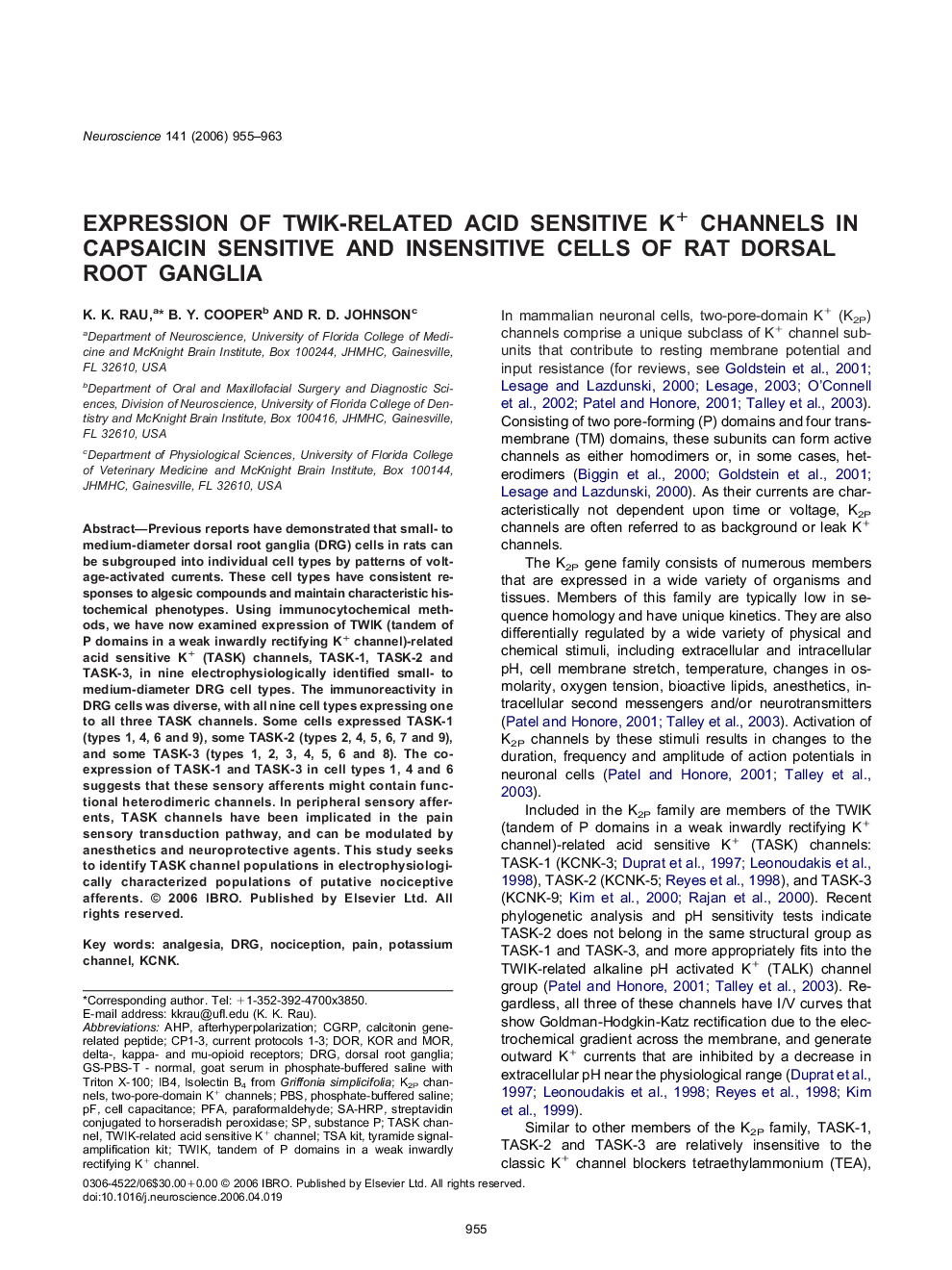| Article ID | Journal | Published Year | Pages | File Type |
|---|---|---|---|---|
| 4342786 | Neuroscience | 2006 | 9 Pages |
Previous reports have demonstrated that small- to medium-diameter dorsal root ganglia (DRG) cells in rats can be subgrouped into individual cell types by patterns of voltage-activated currents. These cell types have consistent responses to algesic compounds and maintain characteristic histochemical phenotypes. Using immunocytochemical methods, we have now examined expression of TWIK (tandem of P domains in a weak inwardly rectifying K+ channel)-related acid sensitive K+ (TASK) channels, TASK-1, TASK-2 and TASK-3, in nine electrophysiologically identified small- to medium-diameter DRG cell types. The immunoreactivity in DRG cells was diverse, with all nine cell types expressing one to all three TASK channels. Some cells expressed TASK-1 (types 1, 4, 6 and 9), some TASK-2 (types 2, 4, 5, 6, 7 and 9), and some TASK-3 (types 1, 2, 3, 4, 5, 6 and 8). The co-expression of TASK-1 and TASK-3 in cell types 1, 4 and 6 suggests that these sensory afferents might contain functional heterodimeric channels. In peripheral sensory afferents, TASK channels have been implicated in the pain sensory transduction pathway, and can be modulated by anesthetics and neuroprotective agents. This study seeks to identify TASK channel populations in electrophysiologically characterized populations of putative nociceptive afferents.
